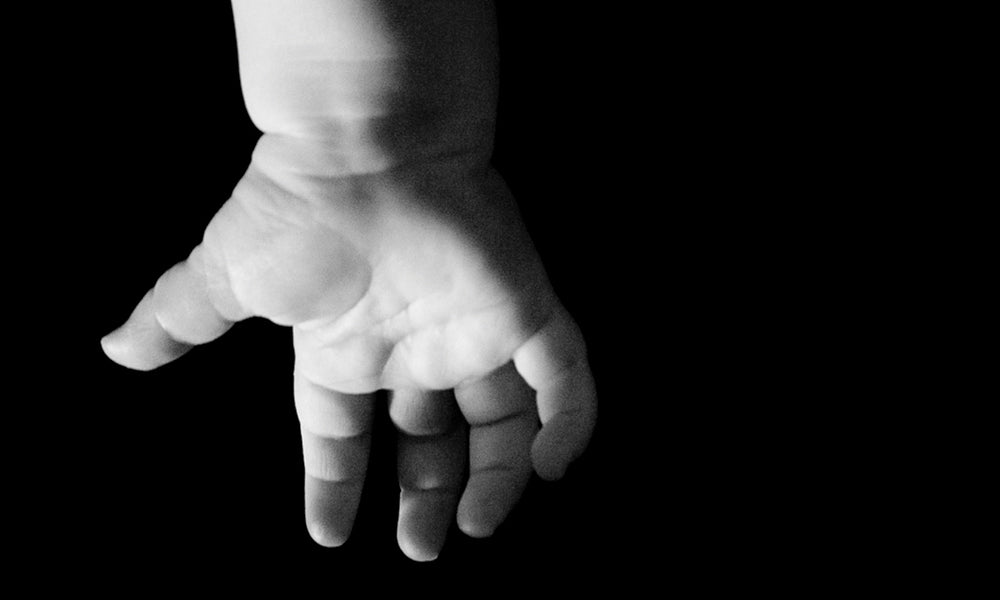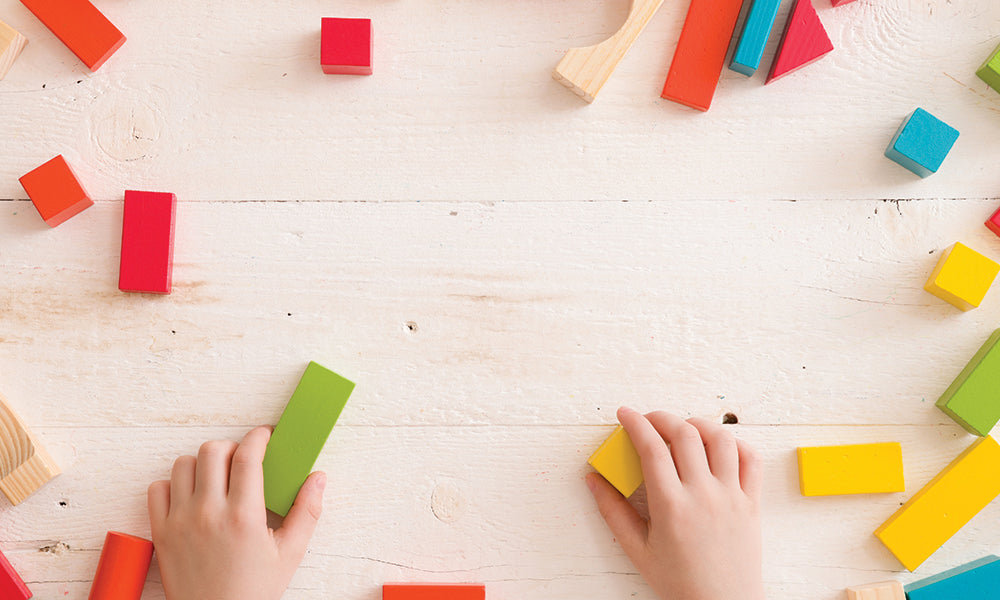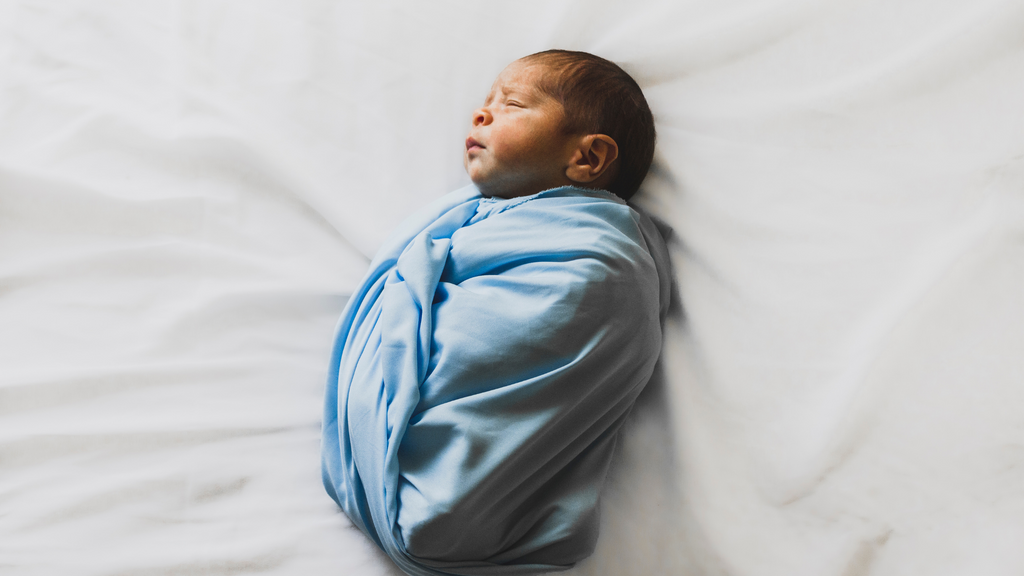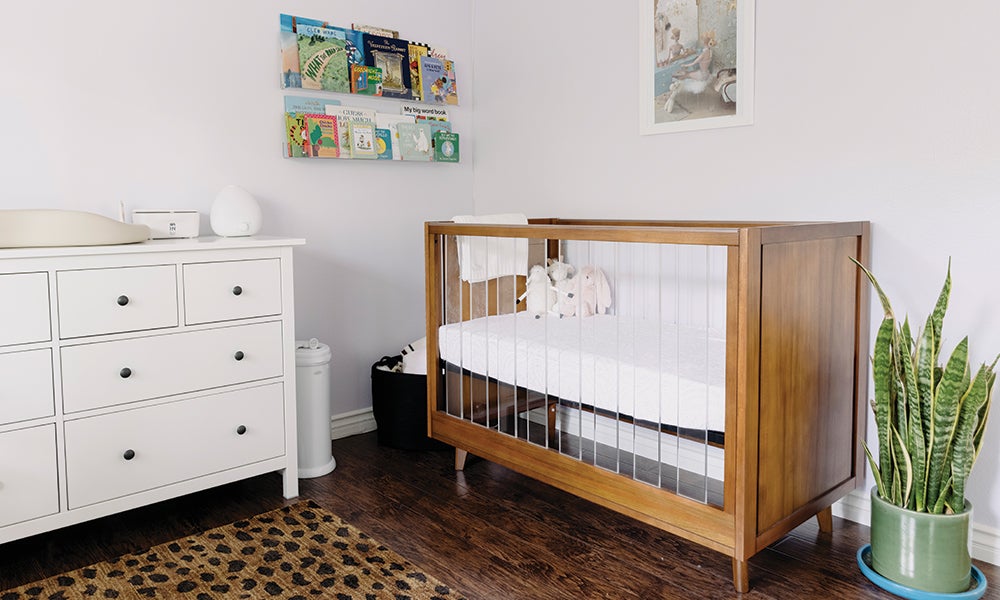The Daily Bloom

Top Parenting and Pregnancy Books to Guide You on Your Journey

Teach Your Kids Altruism with a Family Giving Plan

Tech-Savvy Parenting: Digital Dos and Don’ts for Kids

5 Simple Ways to Raise an Emotionally Intelligent Child

The Differences Between Traditional, Progressive, and Self-Directed Education

The Importance of Making Self-Care a Priority

How to Create a Non-Toxic Home for Your Little One

Coping with Miscarriage And Moving Through Grief

Milestones in the First Two Years: A Month-by-Month Guide to Your Baby's Development

8 Sleep Tips to Help Baby (and Parents) Get Some Rest

I’m not one to celebrate made-up holidays, but as a first-time parent to a five-month-old, World Sleep Day is one that I am very much looking forward to partaking in this year.
While I was pregnant, sleep seemed to be the one topic that was always brought up in conversation with friends and family members who already had kids. “Get as much sleep as you can now, you’ll never sleep again!” warned my sister. “Don’t worry, you’ll get to sleep again… one day,” a friend said with a laugh.
Needless to say, like most first-time moms, I was stressed and worried — not just about popping out a baby or having to figure out how to take care of her (though yes, that also concerned me), but mostly because I didn’t know how much sleep I’d be getting once she arrived.
Five months later, I am happy to report that I am getting much more sleep than I had originally thought, due to the fact that my daughter is a good sleeper. Hallelujah!
While I know all babies are different, I’m also a believer that babies love routine and consistency, and there are many things you can do to help your baby become a better sleeper. While you shouldn’t try to sleep train a newborn (many pediatricians and experts don’t recommend sleep training your baby until they are around 4-6 months), there are plenty of tactics you can employ from the get-go to set your baby up for sleep success later on.
Below are some simple tips that I found helped my baby sleep better at night — and, as a result, us parents, too!
1 | Learn to swaddle
I’m a big fan of Dr. Harvey Karp’s 5 S's method. My husband and I practiced the 5 S’s (swaddle, swing, shush, lay on their side or stomach, and suck) from the very start and found that it really made a difference… especially the swaddling! While some will argue that their babies hate being swaddled, Dr. Karp believes that every baby prefers it because when they were in the womb their limbs were similarly packed together close to their bodies. It’s comforting, calming, and, when used correctly, can help your baby sleep better.
There are tons of resources online to help you learn how to properly swaddle your baby. There are also sacks and pouches that can make swaddling even easier. When my daughter was born, we used both swaddle blankets and sacks to see which one she preferred. It might take a little trial and error, but with practice, you’ll find one that your baby likes.
2 | Play white noise
Before my daughter was born, a dear friend of mine suggested an affordable, tiny sound machine. She swore by it, used it for every nap, and never left home without it. I remembered this helpful tip and packed one with me in my hospital bag. Sure, enough, when they did the hearing test for my daughter, she was understandably upset and fussy so I brought out the sound machine and it worked instantly. Since then, we’ve always used white noise to help her fall asleep and will keep it on through her naps and while sleeping at night. Like being swaddled, it reminds them of being in the womb.
3 | Keep it dark
This tip seems obvious, but it’s an important one! Any amount of light — especially in the evening — can stimulate your baby or make them think it’s daytime. This isn’t as important when they’re fresh newborns, but by the time they’re a few months old, they are more sensitive to the sights and sounds around them. If your baby’s room allows for a lot of light, consider buying blackout curtains. I would also suggest not using a night light while your baby is sleeping — though if you need light for middle-of-the-night feedings or diaper changes, try using a very dim, soft light.
4 | Change into a fresh diaper
Imagine going to bed all warm and comfortable and then suddenly realizing you’re wet and cold. That would certainly wake you up, wouldn’t it? Diaper changes every few hours are inevitable when baby is a newborn, but to ensure your little one gets as much restful sleep as possible, always change them into a fresh diaper before bed.
5 | Consider a pacifier
Pacifiers can sometimes be a controversial topic, but in my experience, they help... A LOT. I know one day we are going to have to deal with having to wean her off the “binky,” but I don’t think I’d trade that impending struggle for all of the hours it has helped her fall asleep or soothed her when she’s upset. It’s worth noting that most doctors suggest not introducing a pacifier until your baby has gotten the hang of breastfeeding, as it could possibly lead to nipple confusion. Also, make sure you buy the right pacifier for your baby’s age. Now that my daughter is five months old, she’s graduated to a pacifier with a bigger nipple.
6 | Rock and pat
Ah, the rock-your-baby-to-sleep dance! You will feel like you’re constantly swinging and swaying, but it will be worth it! Rocking and patting your baby remind them of being in the womb. Some babies prefer to be pat on their butts, backs, or thighs. There are also many baby swings and bassinets that can help you rock your baby to sleep. I used both the mamaRoo (to soothe my baby when she was fussy) and the SNOO (to help her sleep at night). I know some parents who don’t like to rely on these gadgets, but I have found them to be extremely helpful, and when you’re an exhausted parent, you take assistance anywhere you can get it!
7 | Establish a bedtime routine
Creating a bedtime routine will help clue your baby in that it’s time for bed. Around the same time every night (for us, this is between 6-7pm), plan on the same routine: give your baby a bath, read a bedtime story, or feed them in the same spot. This ritual will comfort and relax your little one and will help them well into their toddler years.
8 | Make sure your baby is well-fed
In my experience, a well-fed baby is a happy baby and a happy baby tends to sleep longer and more comfortably than one that is not. I find that when my daughter has eaten well — not just for her last feeding, but for all of her feedings throughout the day — she sleeps best and longest through the night. Most of the time babies wake up for two reasons: they’re either hungry or need their diaper changed. While this has worked best for me personally, there are lots of theories surrounding cluster feedings and nighttime feedings (and dream feeds), so I suggest reading up on all of them, consulting your pediatrician, and figuring out what is best for you and your baby.
*Always consult with your pediatrician before making any major changes or if you have any questions about these practices.
ABOUT THE AUTHOR:
Sara Tan is a writer and editor. She is the co-founder and co-host of beauty podcast Gloss Angeles and the Beauty Director at Refinery29. She has over 12 years of editorial experience and was most recently the Senior Fashion and Beauty Editor at Bustle. She has contributed to various women’s and lifestyle publications including Allure, InStyle, People, Parents, Coveteur, BRIDES, and Women’s Health.

How to Transition from a Bassinet to a Crib
When it comes to your baby’s first few months of life, things are hectic (to say the very least). At the same time, things can move and develop at a rapid pace — including when it comes to your baby’s sleep hygiene.
Before you know it, it’s time for your baby to move from a bassinet to a crib. But when is the right time, and how can you make this transition successful?
For answers, we spoke to Jenni June, CLC, a certified baby and toddler sleep consultant, lactation counselor, and mom of four.
Here are Jenni’s expert tips, tricks, and must-knows from her experience as both a professional pediatric sleep consultant and mother.
When is it time to transition from a bassinet to a crib?
Jenni says the ideal time to transition from a bassinet to a crib is at the 4-month mark.“
This is when they start rolling over and movement becomes a process of self-settling to sleep or going back to sleep,” she begins. “It is also when babies start creating strong associations with their sleep environment.”
What’s the gold standard for the baby’s crib and bedroom environment?
For starters, Jenni says that the crib and sleep environment should meet all the recommendations for safe sleep as outlined by the American Academy of Pediatrics (AAP).Among other things, the AAP outlines:
- the baby’s ideal sleeping position
- how firm the baby mattress should be
- what should and shouldn’t be in the crib
- notes on room sharing
- Of course, the baby’s sleeping environment should also be free from loud noises, excess light, and other such disturbances.
On top of that, Jenni notes the terrific developments in technology when it comes to baby monitors. With them, “many parents feel they are better able to monitor their baby for safety while also providing a sleep environment that is conducive to undisrupted sleep — especially during the day — by moving the baby to their crib in their own nursery,” she explains.
What else should parents know about easing their baby into crib sleeping?
Here are a few final tips and bits of wisdom when it comes to transitioning from a bassinet to a crib.
Erratic sleep schedules are natural
Jenni says that during your baby’s first 16 weeks of life, “their sleep is designed to be light, active, sporadic, and disorganized.”
But why are these sporadic sleep patterns normal?
“Babies aren’t born with a circadian rhythm; they don't have the ability to produce melatonin on a timed basis,” she explains.
Light sleeping during this period is a byproduct of a survival instinct of sorts. As Jenni continues, this sleep pattern is built-in so your baby “can easily resuscitate should their fragile physical vitals fall below normal.”
Read: If your baby has trouble sleeping, that surely doesn’t mean that you’re to blame!
Weed out the noise
Next, she advises against going down the Google/message board rabbit hole. “There’s a poor, unsafe, and loud overload of conflicting internet ‘advice’ that instills fear into new parents,” she starts.
Reading too much into misinformation or unfounded modalities can hinder a parent’s “ability to trust their own parenting instincts that help us fully attune to and follow the baby's unique rhythms and needs,” she continues. This rings true when it comes to your baby’s sleep and otherwise.
Further, at this stage of your baby’s life, she advises against rigid protocols for sleep schedules and sleep training.
Trust your instincts + adjust accordingly
Finally, Jenni urges new parents and caretakers to trust their instincts and take it easy.
Ending on a positive note, she wants to let parents know that even if you face struggles transitioning from a bassinet to a crib, the experience should only be temporary.
“The good news is that you can't create any permanent bad sleep habits [in the baby’s ‘fourth trimester’],” she concludes. “It all changes once the baby is biologically capable of getting deeper, consolidated, more organized and restorative sleep at 4 months of age. This is when they do need you to evolve your care routines, sleep environment, and parenting responses to meet and match their evolving, developing needs for sleep.”
For more tips on pediatric sleep and other bits of baby wisdom, follow Jenni on Instagram.

When to Stop Swaddling Your Baby
As a new parent, you likely have more questions about baby care than there are hours in the day.
But one of the most common you’ll come up on in regards to your newborn is: When should I stop swaddling my baby?
“All babies have a startle reflex called a Moro reflex for the first couple months of life,” begins Texas-based baby sleep consultant Caroline Pavlick. “While some grow out of this sooner than others, babies with a strong Moro reflex do best swaddled so as to prevent them from accidentally waking themselves by startling.”
Soon enough, however, every baby will outgrow the need for a swaddle.
Here’s a closer look at the when, why, and how of transitioning your baby out of the swaddle.
When to Stop Swaddling Your Baby
According to the American Academy of Pediatrics (AAP), the ideal time to stop swaddling your baby is around the 2-month mark. However, Caroline adds that this time frame may extend to 3 or 4 months.
Better yet, a more accurate point of reference to stop is when your baby attempts to (or successfully begins to) roll over. “Parents will see initial signs of rolling with their little one when the baby starts rolling to his or her side while sleeping, or during daytime play,” Caroline explains.
Other signs that it’s time to stop swaddling include them trying to break out of the swaddle or becoming more fussy or restless when wrapped up.
Why is This the Best Time?
Many parents choose to swaddle their newborns to comfort them and promote good sleep. After all, a swaddle is meant to mimic the mother’s womb and thus provides a safe and soothing sleep environment.
However, once your newborn develops and gathers strength to roll over, more serious health risks come into play. If they roll over to a face-down position while still swaddled, their ability to breathe freely gets extremely compromised.
Further, if they happen to gain enough strength to break free of the swaddle on their own, the loose fabric also poses serious health risks.
How to Transition Out of the Swaddle
Even if your baby shows signs that they’re ready to transition out of the swaddle, they may still have trouble adjusting to their new sleep regimen.
That said, here are three parting tips on how to successfully transition your baby out of the swaddle.
1. Ease into it
When it comes to major changes in your baby’s routine, it’s often best to start slowly and ease into a transitional period.
With that in mind, you’ll likely want to start having your baby sleep with one arm out for a few days — followed by both arms for another few days — before they grow comfortable with this new sense of physical freedom.
2. Invest in a sleep sack
Along the same lines of making a smooth transition, you may want to swap the swaddle for a sleep sack.
While not as restrictive as a swaddle, sleep sacks (aka: wearable blankets) are a popular choice to cover and soothe your baby as they sleep — without posing the same risks that loose blankets and other fabrics have.
3. Create a consistent routine and comfortable sleep environment
Last but not least, there are a number of ways to ensure that your newborn gets the most restful and restorative sleep possible.
This includes adhering to a regular sleep routine, which may entail:
- sticking to consistent nap times and bedtimes
- singing them to sleep
- giving them a pacifier to indicate it’s time to rest
- Caroline shares that your baby may also prefer to self-soothe by sucking on their fingers: “Sleep is enhanced tremendously when a baby learns natural ways of self-soothing by bringing their hand to mouth, especially if the baby won’t take a pacifier.”
In addition to establishing a routine, ensure your baby has a safe and comfortable sleeping environment by:
- ensuring the room temperature isn’t too hot or cold
- freeing the sleep area of excess fabrics and objects
- placing the baby to sleep on their back
- turning on a white noise machine
- By understanding when and why your baby is ready to stop being swaddled, you should feel empowered to start embarking on this exciting new step in their evolving sleep routine.

